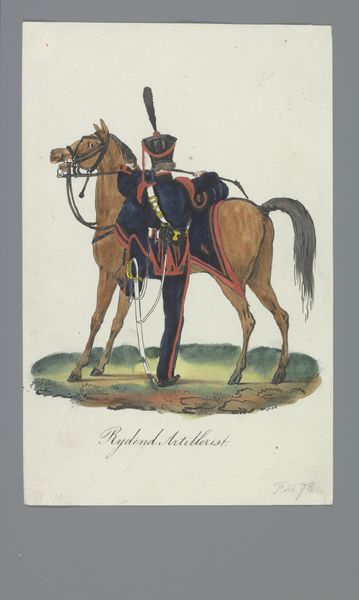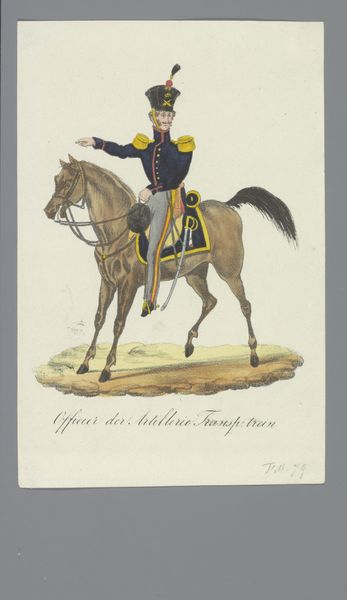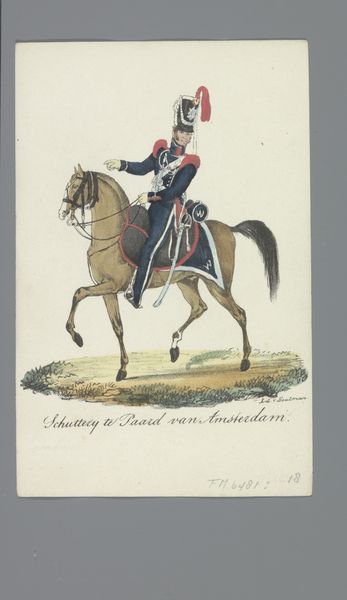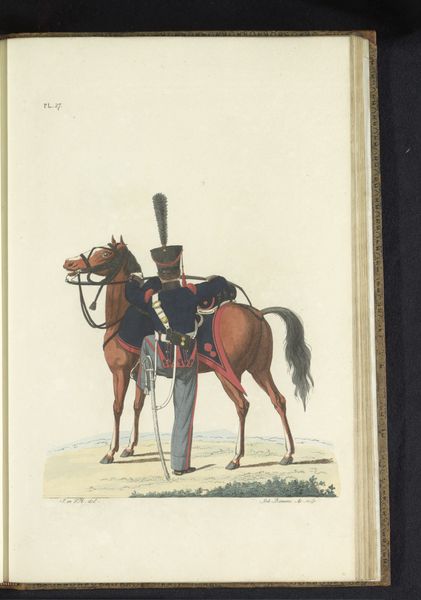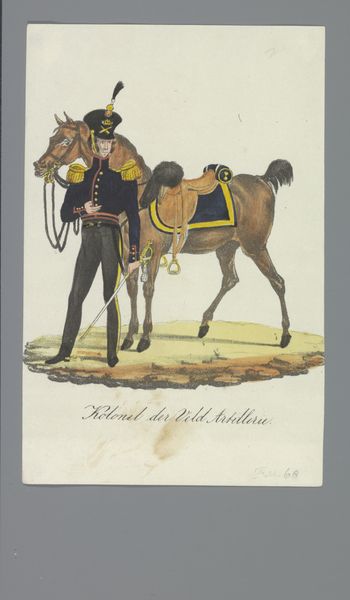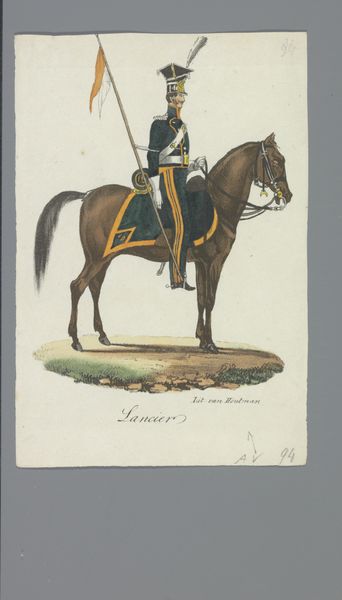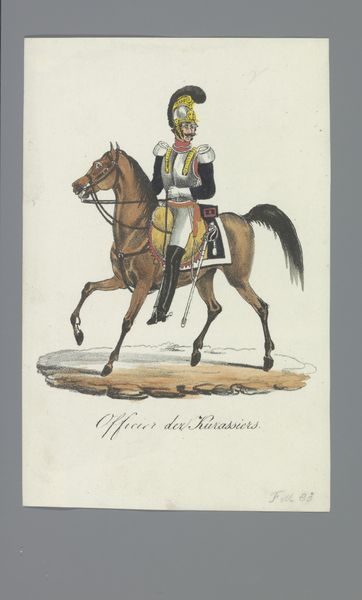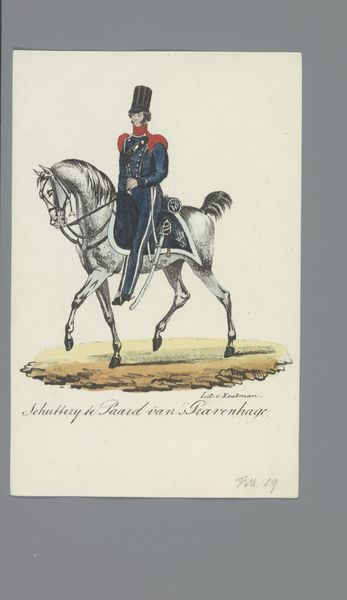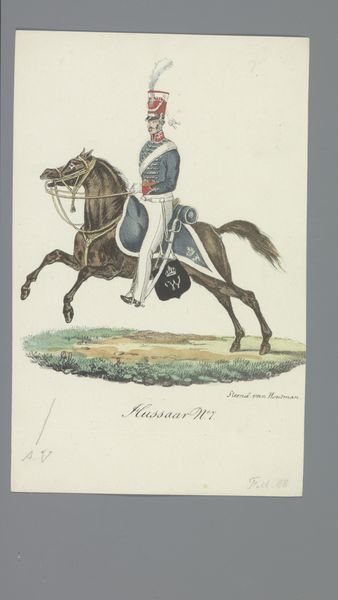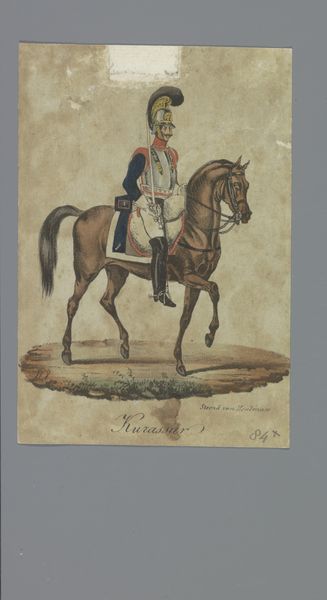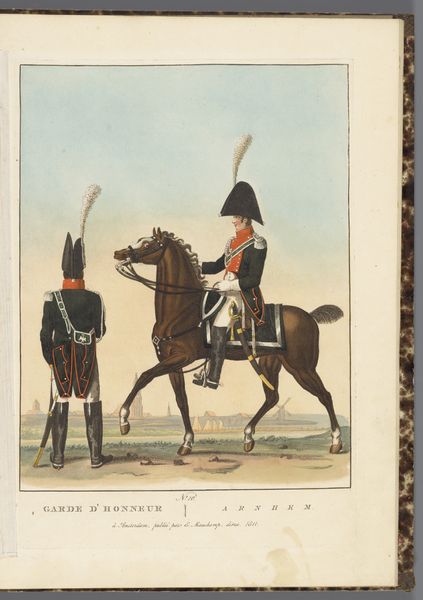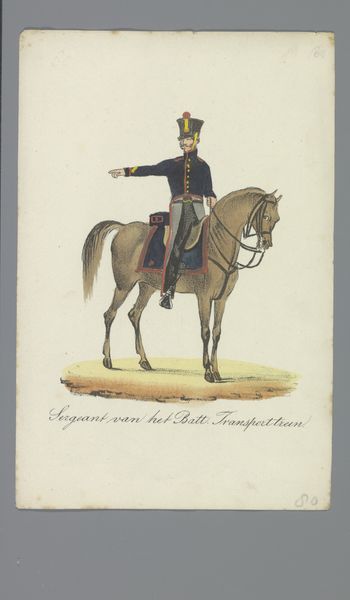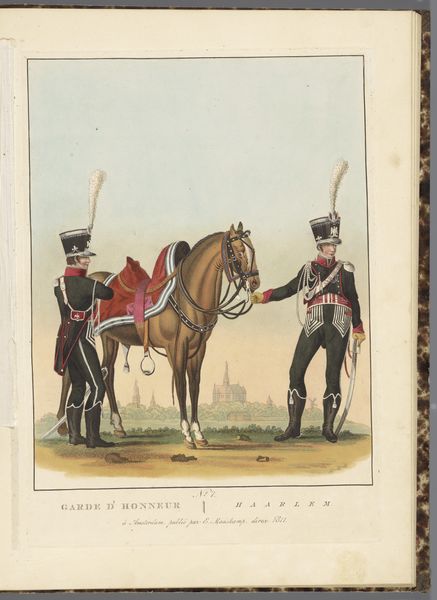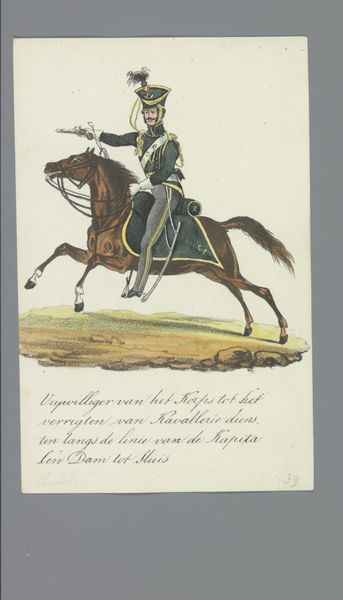
drawing, watercolor
#
portrait
#
drawing
#
landscape
#
watercolor
#
costume
#
sketchbook drawing
#
watercolour illustration
#
genre-painting
#
history-painting
#
academic-art
Dimensions: height 145 mm, width 100 mm
Copyright: Rijks Museum: Open Domain
Curator: Albertus Verhoesen's "Rijdende Artillerist," a watercolor drawing made sometime between 1835 and 1850, depicts a mounted artilleryman. It’s part of the Rijksmuseum collection. Editor: It's a striking image! There is something almost quaint about it; the stiffness of the pose, the carefully delineated uniform and the way the landscape almost feels incidental. It projects a peculiar serenity. Curator: The uniform speaks volumes, doesn't it? The tall plumed hat, the precise fit, the bright red trim; they convey not only military authority but also an idealized image of national identity. It is designed to instill a sense of pride and project power. Editor: Exactly. The bright, clean lines are compelling; but the focus seems to be on the costume itself, rather than any depth of character or sense of movement. The meticulous rendering, the way the horse's musculature is rendered, seems to support this reading. This isn't about dynamism; it's about visual display, carefully constructed symbolism. Curator: Precisely! Look how the horse almost echoes the soldier's posture, a mirroring of strength and control. Horses in art are traditionally tied to concepts of nobility, action, and war. Combined with the artilleryman’s specific role, this image could also allude to the technological advancements transforming warfare at the time. Editor: Do you think that slightly melancholic atmosphere is an unintended consequence of that rigidity? I'm also seeing a definite contrast in texture here, the horse is more opaque than the uniform, which contributes to my feeling about the composition and my overall reaction to it. Curator: Perhaps. Though that effect may have also been heightened through later projections of power, in the post-Napoleonic era; it almost has a flavor of idealized heroism of a bygone age that may have been more prevalent. Editor: Well, this certainly has opened my eyes. I now see that "serenity" may be more aptly described as a form of confident control through detailed visual symbolism. Curator: And I am grateful for your close reading, as the textures you described now gives me another perspective on this compelling historical image.
Comments
No comments
Be the first to comment and join the conversation on the ultimate creative platform.
